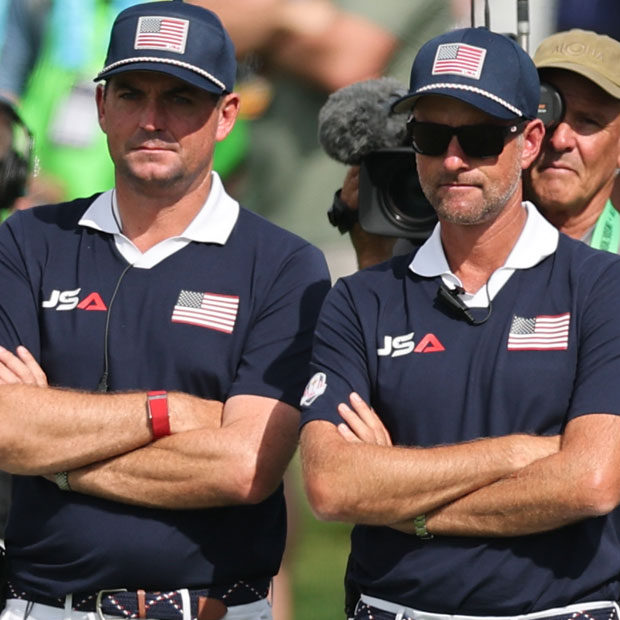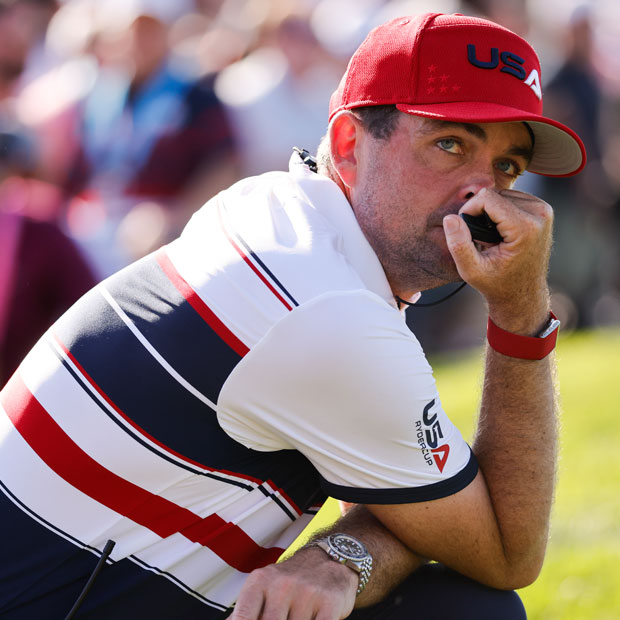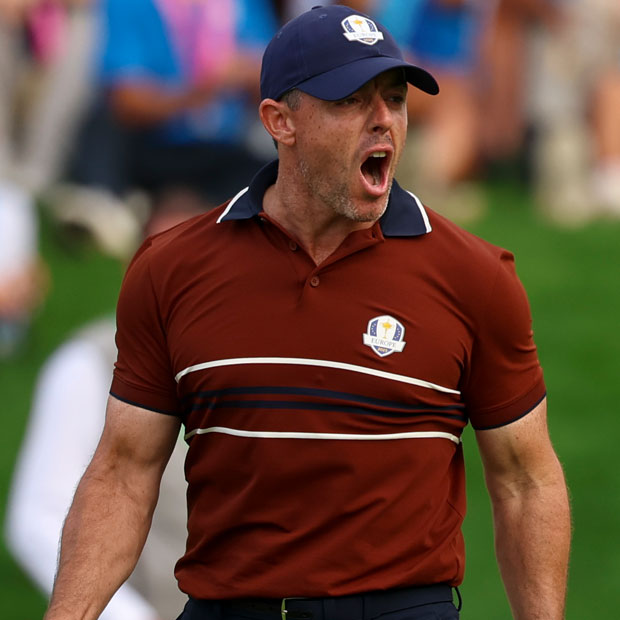Harbour Town Golf Links
On Harbour Town’s flat, swampy, tree-choked property, Pete Dye managed to build 18 distinct holes that present a variety of strategic challenges and stick in the player’s memory

Hilton Head Island, South Carolina, USA
Pete and Alice Dye with Jack Nicklaus (original design, 1969)
Semi-Private
$$$
Design Notebook: Details on the Upcoming Harbour Town Renovation
As part of his vision to transform his family’s property on Hilton Head Island into a world-famous resort, Charles Fraser hired Pete Dye in 1967 to build a championship golf course on a flat, soggy site adjacent to the Calibogue Sound. Jack Nicklaus, then in his late 20s, joined the project as a consultant, but his influence on the design seems to have been limited; Harbour Town is unmistakably a Dye creation. Bucking the mid-century trend toward ever-longer holes with runway tees, cavernous bunkers, and large, elevated greens, the course is small-scale, low-profile, and just 6,655 yards long. Its tree-lined corridors and angled greens call for accurate play more than raw power. Soon after it was finished in 1969, Harbour Town hosted the inaugural Heritage Classic on the PGA Tour. Arnold Palmer won, Dan Jenkins praised the course in Sports Illustrated, and Nicklaus received slightly too much credit. Dye eventually got his due as Harbour Town’s primary designer, however, and went on to become the most influential golf architect of the late 20th century.
{{content-block-course-profile-harbour-town-golf-links-001}}
Take Note…
Consultants, contributors, co-designers. Attribution is a tricky matter with Pete Dye golf courses, perhaps because Dye himself was always quick to mention the contributions of others. “When I design a golf course,” he wrote in his autobiography, “it’s really not just a Pete Dye golf course, since I draw on the expertise and advice of several people.” At Harbour Town, for instance, Dye not only listened to Jack Nicklaus’s input and worked within a general land plan created by George Cobb, but also made a few tweaks based on comments from writer Charles Price. If anyone deserves a full co-design credit at Harbour Town, however, it’s Alice Dye, Pete’s wife and most trusted advisor. Alice directed the construction of the 13th green and its horseshoe-shaped, railroad-tie-sided fronting bunker, turning the short par 4 into one of Harbour Town’s most memorable holes.
{{content-block-course-profile-harbour-town-golf-links-001-q}}
From Hilton Head to Ponte Vedra. Deane Beman, who served as PGA Tour commissioner from 1974 to 1994, considered Harbour Town the best course on the PGA Tour. “Harbour Town is a golf course that has just as many right-to-left as left-to-right holes,” Beman told me when I interviewed him in 2020. “It has smaller greens. It demands accuracy. It doesn’t favor a long hitter versus a shorter hitter. So I thought it had great balance, and it was a great test of golf and a fair test of golf.” This is why, in the late 1970s, Beman chose Dye as the architect of the new venue of the Players Championship, TPC Sawgrass.
Arnie’s speech. After breaking a 14-month-long winless drought at the 1969 Heritage Classic, Arnold Palmer had a quip ready: “I should thank my wife for giving me the encouragement to win. And I think that probably the next thing I should do is thank my good friend and competitor Jack Nicklaus for building a golf course that I could win again on.” Well delivered! And also an example of how much recognition Nicklaus initially received for “building” Harbour Town.
Vintage Heritage. This short film documenting the first Heritage is a wonderful time capsule. Give it a half hour of your time.
Favorite Hole
No. 9, par 4, 267-332 yards
This short par 4 exemplifies Harbour Town’s mixture of restrained and bold architecture.
The only notable features in the fairway are some undulations between 150 and 100 yards from the green. These create uneven lies for those who play conservatively off the tee. The green itself, on the other hand, is the boldest and most eccentric on the course. Pick your descriptor for its shape: a “V,” a boomerang, a reverse Lion’s Mouth, Mickey Mouse’s head. It’s guarded in front by a broad, flat-bottomed bunker and in back by three pot bunkers, the first of which is savagely deep. The entire green complex has a manufactured symmetry that some may find off-putting. I find it attractively strange.
Favorite Hole
No. 9, par 4, 267-332 yards
This short par 4 exemplifies Harbour Town’s mixture of restrained and bold architecture.
The only notable features in the fairway are some undulations between 150 and 100 yards from the green. These create uneven lies for those who play conservatively off the tee. The green itself, on the other hand, is the boldest and most eccentric on the course. Pick your descriptor for its shape: a “V,” a boomerang, a reverse Lion’s Mouth, Mickey Mouse’s head. It’s guarded in front by a broad, flat-bottomed bunker and in back by three pot bunkers, the first of which is savagely deep. The entire green complex has a manufactured symmetry that some may find off-putting. I find it attractively strange.
The approach shot, though short, is tricky. Both of the green’s lobes run away slightly, putting a premium on accuracy and spin control. Recoveries from the front bunker or just short of it require great touch. It’s perhaps for this reason that today’s PGA Tour pros, in spite of their training to hit driver everywhere, lay up with iron off the tee about half of the time here. Having a fuller swing with a wedge on the approach allows them to generate more spin.
Conventional wisdom holds that when the pin on No. 9 is on the right, one should favor the left side of the fairway, and vice versa. This is true in theory because the trees pinching the entrance to the green tend to get in the way of left-to-left and right-to-right approaches. But in practice, since the fairway is only 25 yards wide, most savvy players will simply aim down the middle. So, in my opinion, a little fairway widening and tree management would improve the hole.

{{content-block-course-profile-harbour-town-golf-links-002}}
Overall Thoughts
Discussions of Pete Dye’s architecture tend to focus on visually obvious components: the small greens, the snaking water hazards, the railroad-tie bulkheads, the juxtaposition between 100-yard-long waste areas and pot bunkers. At Dye’s best courses, however, what impresses me most is his command of the quieter dimensions of his craft. His mastery of the fundamentals of golf course design is on full display at Harbour Town Golf Links. On a swampy, tree-choked property with barely five feet of total elevation change, he built 18 distinct holes that drain fairly well, present a variety of strategic challenges, and stick in the player’s memory.
Harbour Town’s hole-to-hole variety, especially on and around the greens, is perhaps its most admirable trait. A site as flat as this one is a true test of an architect’s skill in green design. Dye had no landforms where he could situate greens to take advantage of natural peculiarities. He instead built 18 greens from the ground up, making each one memorable through orientation, surrounding hazards, and contouring.
For the most part, Harbour Town’s greens are small and subtle, yet each has its own character. The first green has a simple, almost circular shape and sits flush with the ground, but its slight front-to-back, left-to-right tilt makes it distinctive and provides an advantage to approaches from the right edge of the fairway. The second green, on the other hand, is built up behind a large fronting bunker and angled from left to right, giving preference to approaches from the left side of the corridor. So it goes throughout the course: each green is immediately distinguishable from the last.
There are a few spots where Dye went for wilder green concepts. The green on the par-5 fifth hole is sharply pushed up, making players think twice about going for it in two; the ninth green, which I described above, is a one-of-a-kind creation; the 12th green has a striking “L” shape, wrapping around a front-left bunker; and the bulkheaded 13th green, designed by Pete’s wife Alice, has an idiosyncratic and arresting profile.
{{content-block-course-profile-harbour-town-golf-links-003}}
It’s important to note, however, that the reason these more eccentric designs stand out is that there are only four of them. A less skillful (or less confident) architect might have concluded that nonstop boldness would be the only way to generate excitement on such unpromising land. Fortunately, Dye trusted both his own ability to create interest in quieter ways and the player’s capacity to notice and appreciate nuances of topography and strategy.
Indeed, Harbour Town’s most remarkable characteristic, especially in our current age of big and bold design, is its low-profile modesty. This is a course that must be experienced on the ground. Many of the holes hinge on one little contour, such as the spine running diagonally into the front-right corner of the fifth green, directing precisely played shots toward the putting surface and propelling others into the swale beyond. Others are defined by a single bunker in just the right place, like the infamous pot long and left of the 14th green, which dispenses punishment to those who hedge too far away from the water short and right. Discovering such subtleties, the ones that can’t be fully discerned in drone photos, is a big part of the pleasure of walking and studying Harbour Town.
It’s also what continues to set the course apart. In an interview with Geoff Shackelford in 2008, Dye said that “if you built that kind of golf course today, they would not pay you.” The ensuing exchange is sobering:
SHACKELFORD: Harbour Town? But it’s loved by pros and high handicappers alike.
DYE: When it was done, it was so entirely different. But that type of golf course in today’s market, where it has to look good in magazines and where you have to sell real estate….
SHACKELFORD: You mean Harbour Town is not flashy enough?
DYE: Absolutely.
(Update “look good in magazines” to “look good on Instagram” and “sell real estate” to “sell destination-resort stays and destination-club memberships,” and you have today’s incentives.)
This is a different version of history than we’re usually told. According to the standard narrative, one that Dye himself occasionally endorsed, Harbour Town set a new direction for the American golf architecture. “Modern golf course design started in 1969,” Dan Jenkins, one of Harbour Town’s earliest boosters, wrote late in his career, “when Pete Dye and Jack Nicklaus… introduced the world to railroad-tie bulkheads, small greens, small bunkers, and waste areas, thereby transforming a forlorn marsh into Harbour Town Golf Links on Hilton Head Island in South Carolina.”
The truth is that Harbour Town’s best traits have rarely been replicated. Pete Dye’s design was forward-thinking in 1969, and it seems even more so now.
1 Egg
I’ve frequently heard Harbour Town called overrated. In its present form, it probably is. This would not be the case, however, if the course were presented less like a 21st-century PGA Tour venue, complete with wall-to-wall overseed from October through May, and more like the rustic retreat that developer Charles Fraser envisioned. Fairway lines are the lowest-hanging fruit. As recently as the 1990s, Harbour Town had relatively little rough and several hardpan-filled waste areas. Now it’s all spindly fairways and white, fluffy sand. So a bit more short grass and ruggedness wouldn’t hurt. The place has “links” in its name, after all! It gets an Egg for design, but nothing more at the moment.
Course Tour

{{content-block-course-profile-harbour-town-golf-links-004}}
Leave a comment or start a discussion
Get full access to exclusive benefits from Fried Egg Golf
- Member-only content
- Community discussions forums
- Member-only experiences and early access to events





.jpeg)












Leave a comment or start a discussion
Lorem ipsum dolor sit amet, consectetur adipiscing elit. Suspendisse varius enim in eros elementum tristique. Duis cursus, mi quis viverra ornare, eros dolor interdum nulla, ut commodo diam libero vitae erat. Aenean faucibus nibh et justo cursus id rutrum lorem imperdiet. Nunc ut sem vitae risus tristique posuere. uis cursus, mi quis viverra ornare, eros dolor interdum nulla, ut commodo diam libero vitae erat. Aenean faucibus nibh et justo cursus id rutrum lorem imperdiet. Nunc ut sem vitae risus tristique posuere.